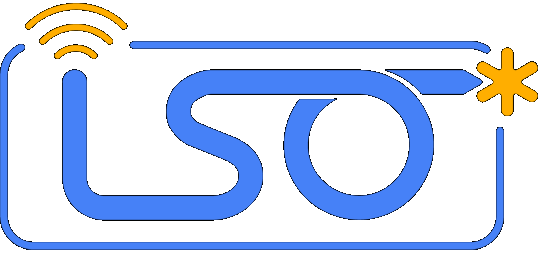Vabilo
Program
Informacije
Vprašalnik
Arhiv seminarjev
Razstavljavci merilne opreme:




Medijski pokrovitelj:

Organizatorja:
Fakulteta za elektrotehniko
Laboratorij za sevanje in optiko
|
Petek, 1. februar 2013 ob 0815-1000
Optical Access Network scenario and evolution towards TWDMPON
Lucio D’Ascoli, Huawei Technologies, Avstrija
Company profile, Ubiquitous Ultra Broadband scenario, the heterogeneous access network, TCO and ROI aspects, the synergy between different technologies; the role of point to multipoint topology in optical access networks, FSAN and ITU-T, background on TDM based PON systems (burst mode operations, ranging, DBA), GPON, 10GPON, deployments, NGPON2, coexistence, TWDMPON, standardization, Huawei NGPON2 prototypes, conclusion/summary
Author Biography
 Lucio D’Ascoli is with Huawei since 2011 where he is Senior Marketing Manager for Access Networks.
Before he worked with Italtel, Infineon and Telsey, where he covered various R&D management positions.
He has 24 year experience on the development of access network products and customer premises equipment for triple/quadruple play operators.
His background includes coordination of international design teams of digital/mixed signal integrated circuits, HW/FW/SW development, xDSL systems, optical and PON systems, management systems, voice/video/data and related network interoperability aspects. In the period 1992- 2000 he worked in the framework of EU funded research, covering various management and coordination positions in a number of projects. Among these, the EU research project BAF which, in 1995, got the “best demonstrator award” by the EU Commission for its world-first 622Mbps bidirectional PON access system and which gave contributions to the FSAN initiative, industrial body created in the same period.
Lucio D’Ascoli is with Huawei since 2011 where he is Senior Marketing Manager for Access Networks.
Before he worked with Italtel, Infineon and Telsey, where he covered various R&D management positions.
He has 24 year experience on the development of access network products and customer premises equipment for triple/quadruple play operators.
His background includes coordination of international design teams of digital/mixed signal integrated circuits, HW/FW/SW development, xDSL systems, optical and PON systems, management systems, voice/video/data and related network interoperability aspects. In the period 1992- 2000 he worked in the framework of EU funded research, covering various management and coordination positions in a number of projects. Among these, the EU research project BAF which, in 1995, got the “best demonstrator award” by the EU Commission for its world-first 622Mbps bidirectional PON access system and which gave contributions to the FSAN initiative, industrial body created in the same period.
|








 Lucio D’Ascoli is with Huawei since 2011 where he is Senior Marketing Manager for Access Networks.
Before he worked with Italtel, Infineon and Telsey, where he covered various R&D management positions.
He has 24 year experience on the development of access network products and customer premises equipment for triple/quadruple play operators.
His background includes coordination of international design teams of digital/mixed signal integrated circuits, HW/FW/SW development, xDSL systems, optical and PON systems, management systems, voice/video/data and related network interoperability aspects. In the period 1992- 2000 he worked in the framework of EU funded research, covering various management and coordination positions in a number of projects. Among these, the EU research project BAF which, in 1995, got the “best demonstrator award” by the EU Commission for its world-first 622Mbps bidirectional PON access system and which gave contributions to the FSAN initiative, industrial body created in the same period.
Lucio D’Ascoli is with Huawei since 2011 where he is Senior Marketing Manager for Access Networks.
Before he worked with Italtel, Infineon and Telsey, where he covered various R&D management positions.
He has 24 year experience on the development of access network products and customer premises equipment for triple/quadruple play operators.
His background includes coordination of international design teams of digital/mixed signal integrated circuits, HW/FW/SW development, xDSL systems, optical and PON systems, management systems, voice/video/data and related network interoperability aspects. In the period 1992- 2000 he worked in the framework of EU funded research, covering various management and coordination positions in a number of projects. Among these, the EU research project BAF which, in 1995, got the “best demonstrator award” by the EU Commission for its world-first 622Mbps bidirectional PON access system and which gave contributions to the FSAN initiative, industrial body created in the same period.